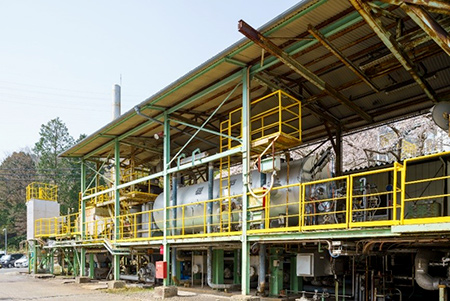IHI Mono-Fires Ammonia with Low Nitrogen Oxide Emissions in Breakthrough toward Commercial Use at Thermal Power Plant Boilers

IHI announced today that it has mono-fired ammonia while minimizing harmful emissions of nitrogen oxide. This success at the compact combustion testing facility of the Aioi Works in Hyogo Prefecture is a major step toward commercializing ammonia combustion systems for thermal power plant boilers.

Compact combustion testing facility at IHI Aioi Works
Organizations worldwide are striving to address climate change by achieving Sustainable Development Goals. Expectations for using hydrogen in the energy field are thus rising because it emits no carbon dioxide during electricity production. This situation has prompted various R&D efforts to overcome the high costs of transporting and storing hydrogen.
Ammonia has captured attention as a new energy source that can help swiftly materialize a low-carbon economy. That is because it offers a range of advantages. It maintains high hydrogen content. It is easy to liquefy, transport, and store. Other benefits are that it enjoys widespread distribution as a raw material in chemicals and has a robust transportation infrastructure. At the same time, ammonia contains nitrogen, which could increase nitrogen oxide emissions during combustion, increasing flame retardancy and impeding combustion stability.
IHI devised a burner structure and ammonia supply technique to successfully mono-fire ammonia. This approach reduces nitrogen oxide emissions to the level of coal mono-combustion while lowering toxic emissions from unburned ammonia. The company looks to enhance the burner structure and assess boiler performance impact. It will conduct more mono-firing burner demonstration tests in 2025.
IHI is intensively developing hydrogen and ammonia utilization technologies and building supply chains for these energy sources. It is also providing carbon recycling technologies and other solutions to help materialize a zero-carbon, circular economy.
